Avoiding the Power Grid
A one-meter-square gray box studded with green lights sits in a hallway near the laboratory of materials scientist Eric Wachsman, director of the Energy Research Center at the University of Maryland. It is a mockup of a fuel-cell device that runs on natural gas, producing electricity at the same cost as a large gas plant.
The box is designed to house stacks of solid-oxide fuel cells that differ from their conventional counterparts in a dramatic way: they’re projected to produce electricity for $1 per watt, down from $8 in today’s commercial versions, thanks to improvements that Wachsman has made in the ceramic materials at their heart.
The technology could eventually become a practical and affordable way to ease strain on the increasingly stressed electricity grid; anywhere there’s cheap natural gas, we could also have constant and cheap electricity.


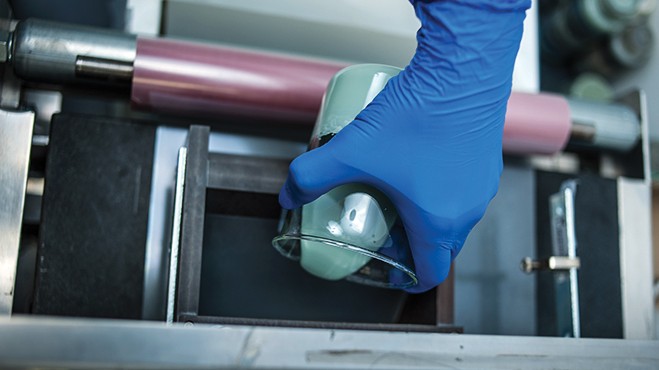
That would make it possible to do away with the diesel generators that are now widely used for backup power and as a key component of microgrids in places like Malaysia and cellular base stations in rural areas around the world. Solid-oxide fuel cells—which can run on diesel fuel or gasoline, not just natural gas—use much less fuel per watt than diesel generators of similar size.

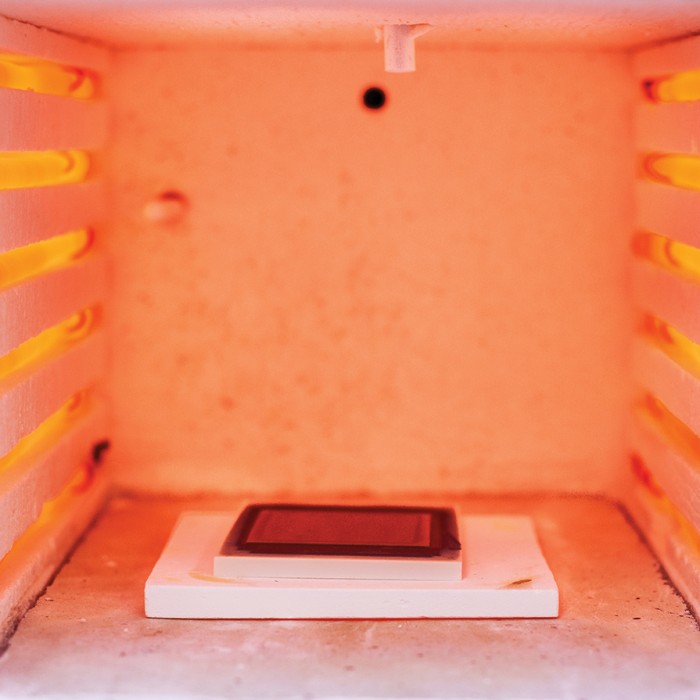
Right: After baking, the layers have become a ceramic plate measuring 100 square centimeters.
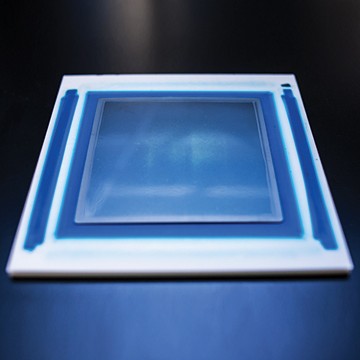
Right: After baking, the layers have become a ceramic plate measuring 100 square centimeters.
Conventional solid-oxide fuel cells run at high temperatures, making them more expensive and prone to performance losses. A key advance in the Maryland fuel cell is that it is based on cerium oxide and bismuth oxide, which are far more electrically conductive than materials used in commercial versions and produce much more electricity per square centimeter. The cell can operate at 650 °C, down from 900 °C in existing products, reducing thermal stresses and insulation needs. And the final product is made of 32 stacks, each of which can be replaced if it fails.
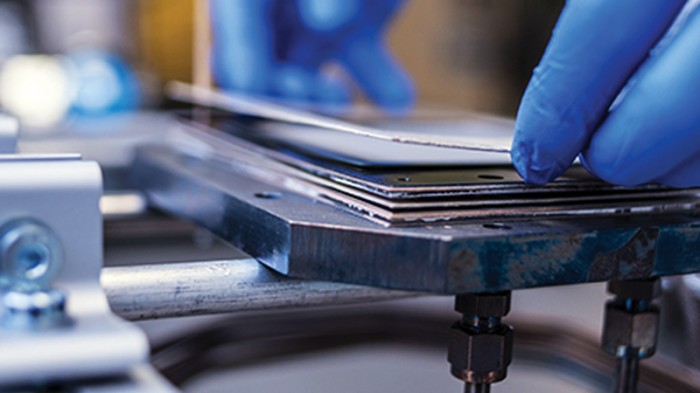
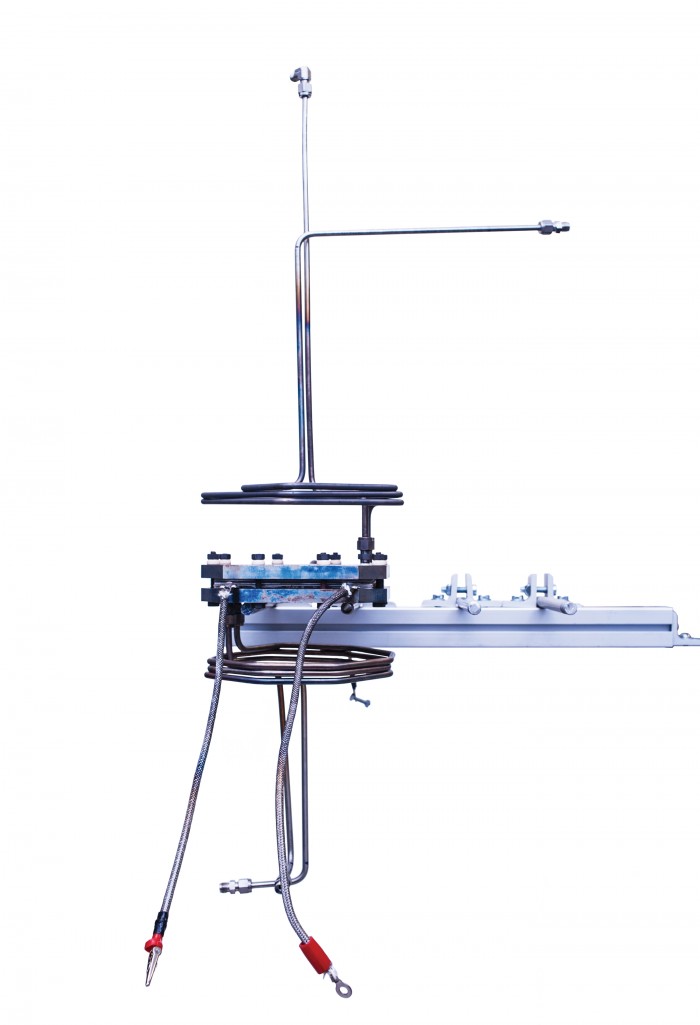
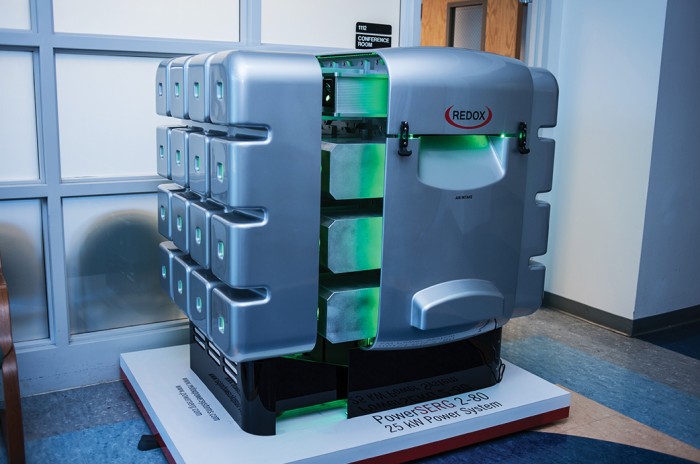
The gray box mocks up a 25-kilowatt version of the technology, which is now under development by a startup called Redox Power Systems. Redox is building a factory in Melbourne, Florida, and hopes to launch the product in 2014. A 25-kilowatt fuel cell is enough to power a small strip mall; units that are smaller still could serve a single house. In the long term, the technology could even be put into hybrid vehicles to charge their batteries, since it is both lighter than an internal-combustion engine and more efficient at producing electricity.
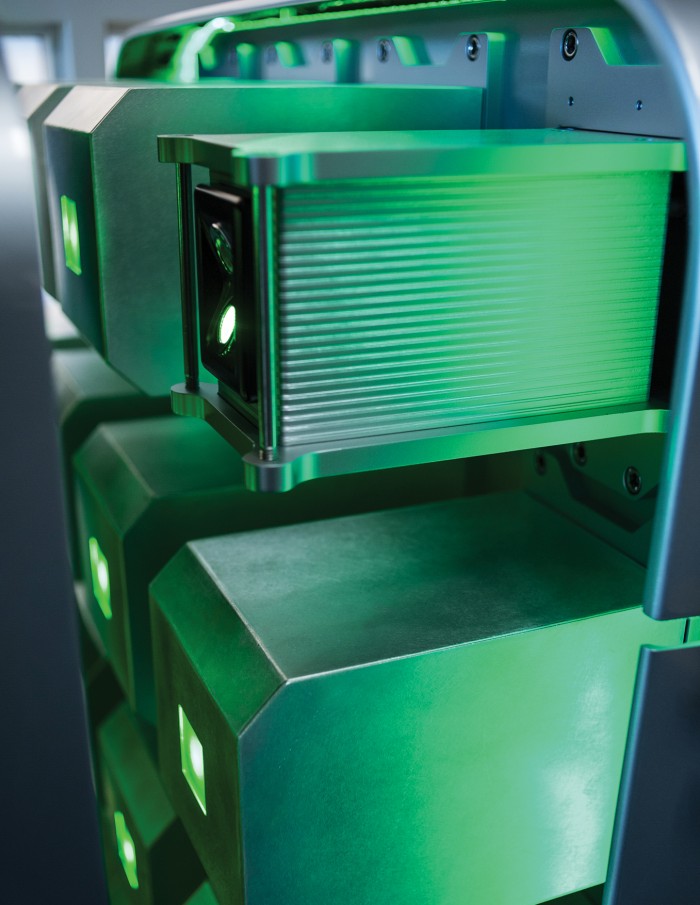
But the stand-alone generators, if successful, would be impressive enough. They’d mean “we’re on par with conventional power generation,” Wachsman says. “It’s not just backup power—it’s energy security.”
Keep Reading
Most Popular
Large language models can do jaw-dropping things. But nobody knows exactly why.
And that's a problem. Figuring it out is one of the biggest scientific puzzles of our time and a crucial step towards controlling more powerful future models.
How scientists traced a mysterious covid case back to six toilets
When wastewater surveillance turns into a hunt for a single infected individual, the ethics get tricky.
The problem with plug-in hybrids? Their drivers.
Plug-in hybrids are often sold as a transition to EVs, but new data from Europe shows we’re still underestimating the emissions they produce.
Google DeepMind’s new generative model makes Super Mario–like games from scratch
Genie learns how to control games by watching hours and hours of video. It could help train next-gen robots too.
Stay connected
Get the latest updates from
MIT Technology Review
Discover special offers, top stories, upcoming events, and more.